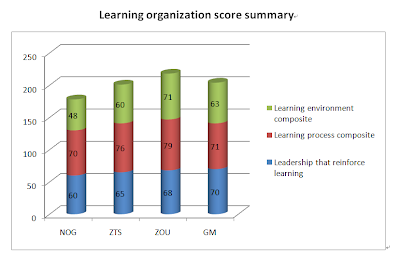Zhenjiang Ocean University (ZOU) gets the highest score in three times of comparison. Comparatively, the place I worked for, NOG, an profit education organization, gets the lowest score. ZTS and GM ranked the third and the second higher. Taking the face value of the score, one may tent to conclude that universities in mainland China seem a better learning organization than other profit organizations or companies.
I doubt the
conclusion on logical level (Abusing incomplete deduction); even if ZOU is an
aberration among slow universities in mainland China, I still doubt the
reliability of the evaluation result. There are three reasons.
First, mainland
China regime regularly spares comparatively less money in education than its
counterparts with similar GDP. Considering the even larger number of students
to be educated, less investment would only lead to increasing difficulty in
ensuring higher education quality. The common situation of a mainland China
university is following the model like this: 1) Getting unsubstantial
investment from regime 2) trying to spend all the money from the regime and
make money itself, otherwise next year’s budget will be made on this year’s
actual spending 3) Reluctant to make any changes and satisfy students’ needs,
but eager to push graduates to find jobs. There is no news about ZOU’s
particular excellence than other universities (You can Google it). However, private
business needs to analyze the market, the customers, and its service/products
all the time to survive, besides paying excessively heavy tax. Successful profit
organizations and corporations tend to be involved in more learning and change
compared with typical mainland China universities.
Second, ZOU may
not get the most adequate resources to support its organizational learning/
change from the China regime compared with all universities in that area.
Chinese regime classified universities into different levels, and only those
classifies as first level ones could get relatively adequate resources to
sustain their organizational learning and change. Unfortunately, ZOU may not
belong to those universities who get a bigger share every year.
Third, different
group member’s evaluation standard is quite different from each other. The
answer to every question to the survey is determined largely by personal
understanding and attitude. If I were evaluate my previous university (though
it is viewed as a first-class mainland China university), I probably give it
much lower score, even than that of NOG. I believe the “Learning Organization
Survey” would be more useful if it is used in finding staff’s general opinion
about organization learning performance of a particular organization rather
than comparison between different organizations even in different industry.



No comments:
Post a Comment